Back to top: Family
Overview
After the main shape is determined then the next larger category is called in our system Family. This page describes each possible family code and gives examples of its use within the system.
The family code is determined by distinctive characteristics of the individual vessel shape. These codes are not intended to be used individually, but rather as a further description of the main shape. So for example a large category of jars in the Khabur period are jars with a relatively high neck that makes them easier to carry. In this case the code is for jars (j) and the next part of the code is (n) for necked.
Another prevalent example can be seen in the main shape of bowls. Many bowls in the Khabur and Mittani periods are carinated, that is they have a change in the angle of the vessel wall, usually mid body. In this case the code for the main shape is a (b) for bowl and the Family is carinated (cr).
The criteria for assigning these categories in the family are based on the examples within the corpus as found in the excavations; therefore they are not based on an external system but rather based on the shapes as used within the site.
Although in principle, any combination of codes is possible, in practice, some family codes only occur with certain main shapes. The list below provides details concerning this for each family code.
Examples of Family shape codes:
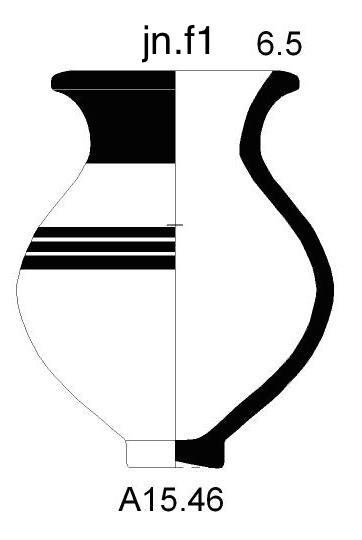
|
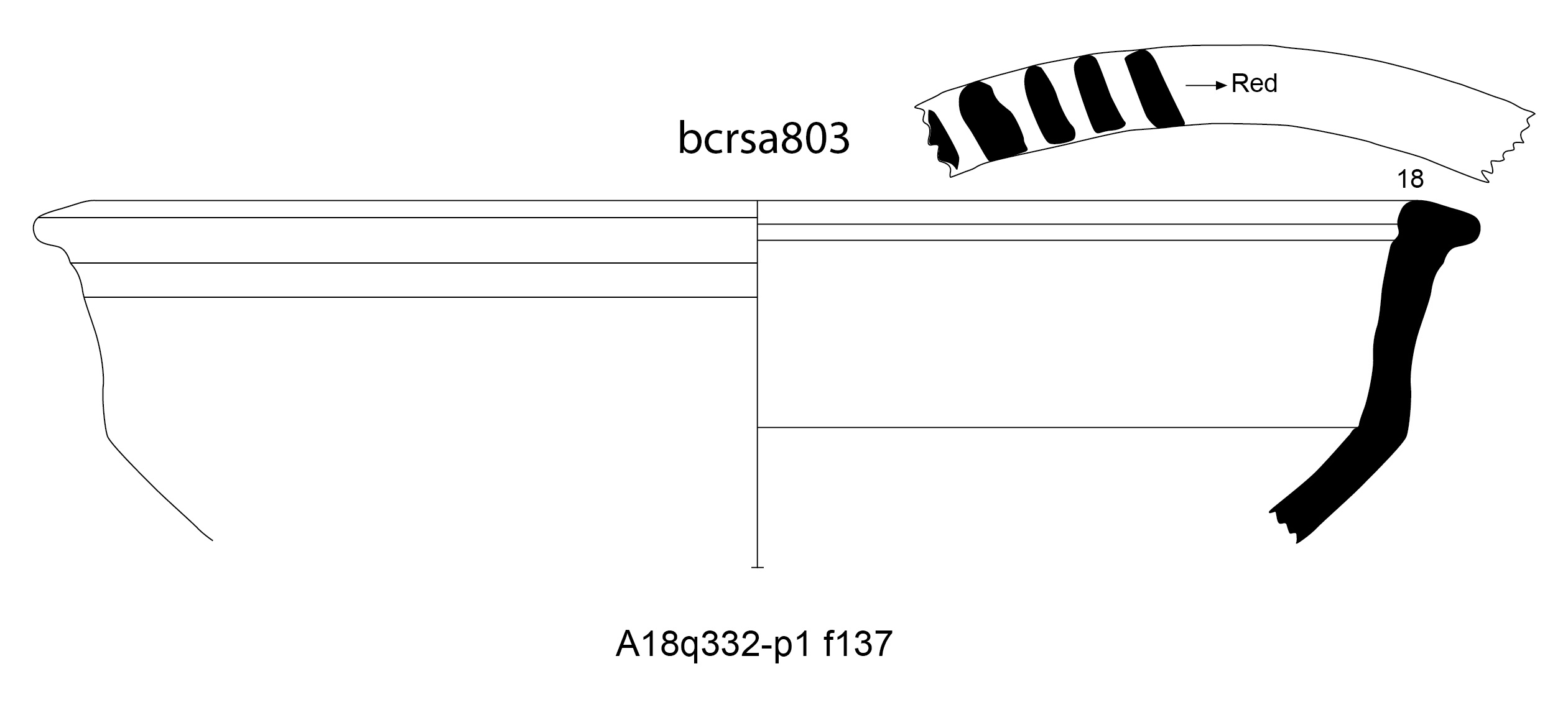
|
Khabur necked jar (flaring)
A15.46 |
Mittani carinated bowl (sharp carination)
A18q332-p1
|
Back to top: Family
Family shape codes
Back to top: Family
a - upper wall angled toward exterior
This shape only occurs with jars, particularly in the Late Chalcolithic. The shape is very rare.
See Horizon example.
Back to top: Family
ba - coba
This is a specific type of bowl from the Late Chalcolithic. It is a very rare shape.
Back to top: Family
c - conical
This is a very common type of cup, found in most horizons.
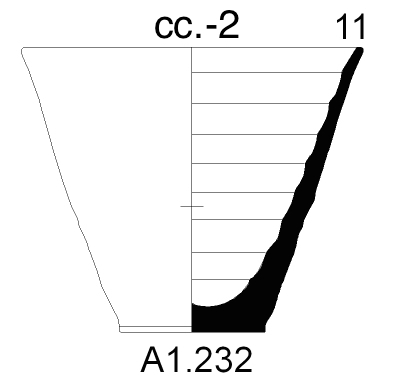
|
Conical cup
A1.232 |
See more examples in the Cross-horizon typology.
Back to top: Family
cr - carinated
Carinations constitute an angle in the body of the vessel, often in the middle or lower part. They occur quite frequently with bowls throughout the occupation of Urkesh. Very rarely, they can also occur with casseroles, and at times on their own as a body sherd. Carinations are usually further characterised as sharp or rounded (see sub-family).
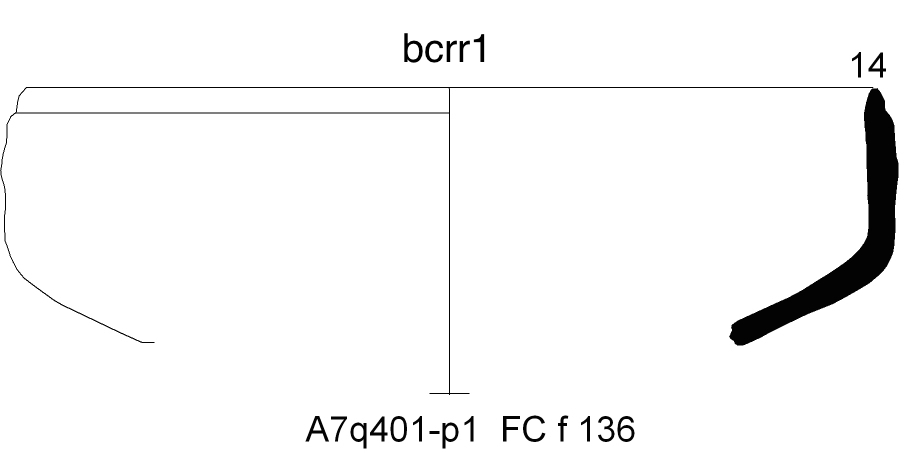
|
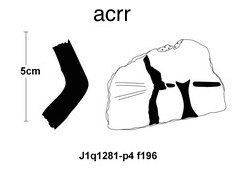
|
Carinated bowl (rounded)
A7q401-p1 |
Carinated casserole (rounded)
J1q1281-p4
|
See more examples of cups in the Cross-horizon typology.
See more examples of casseroles in the Cross-horizon typology.
Back to top: Family
d - deep
Deep bowls are one of the most common types of bowl. The characteristic only occurs with bowls, and can be found in all horizons.
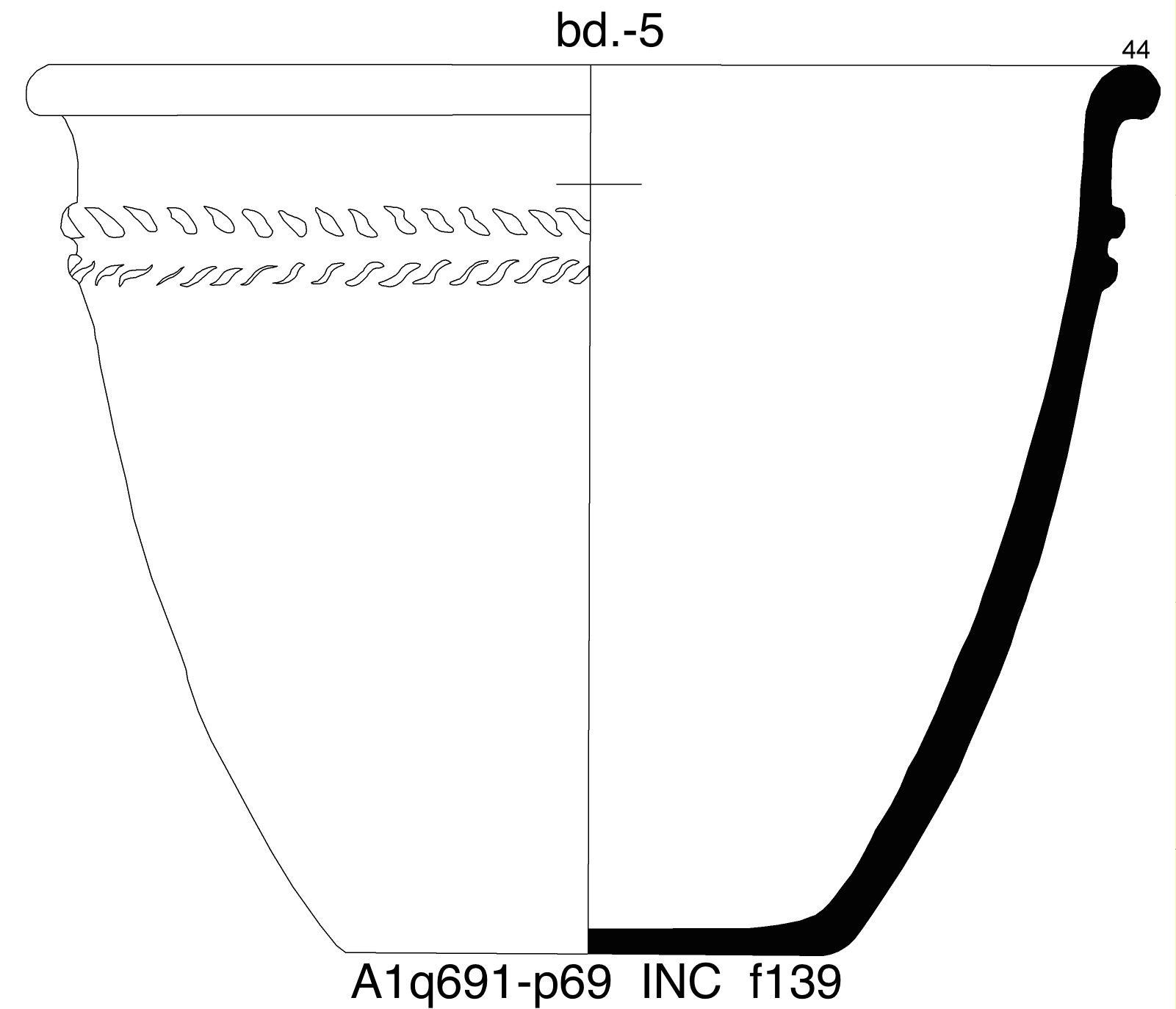
|
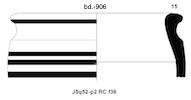
|
Deep bowl
A1q691-p69 |
Deep bowl
J5q52-p2
|
See more examples in the Cross-horizon typology.
Back to top: Family
g - globular body
The globular body is a feature if a specific type of jar. It is not among the most common shapes, but appears especially in the ED III period.
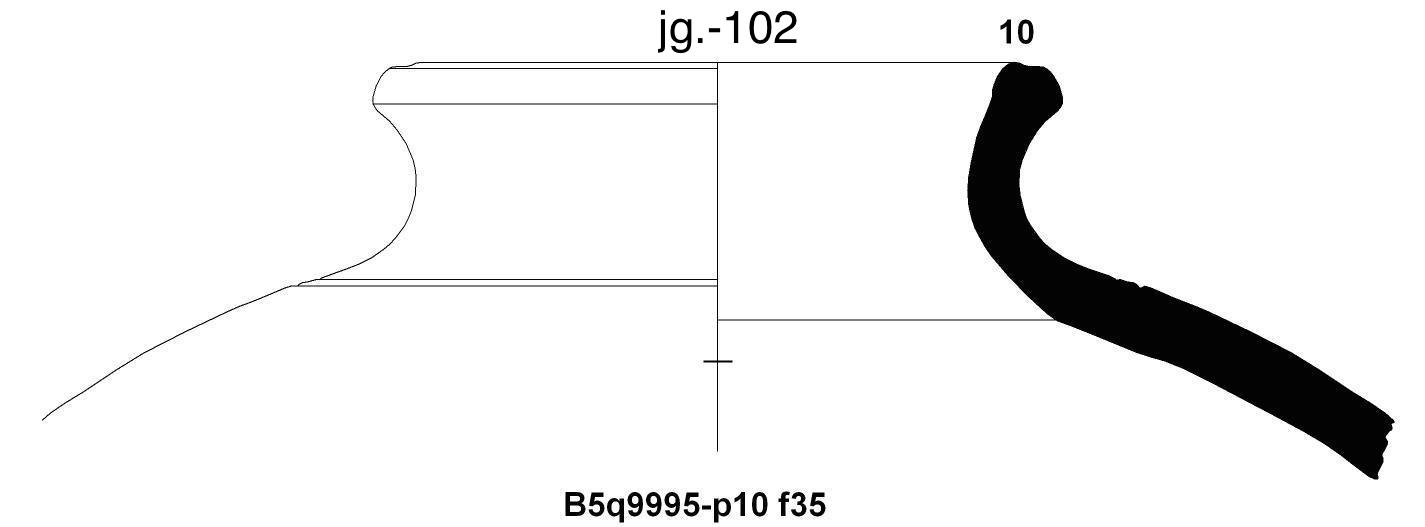
|
Jar with globular body
B5q9995-p10 |
See more examples in the Cross-horizon typology.
Back to top: Family
gf - footed goblet
The footed goblet has a raised foot and are often painted. It is a type of cup characteristic of the Mittani period.
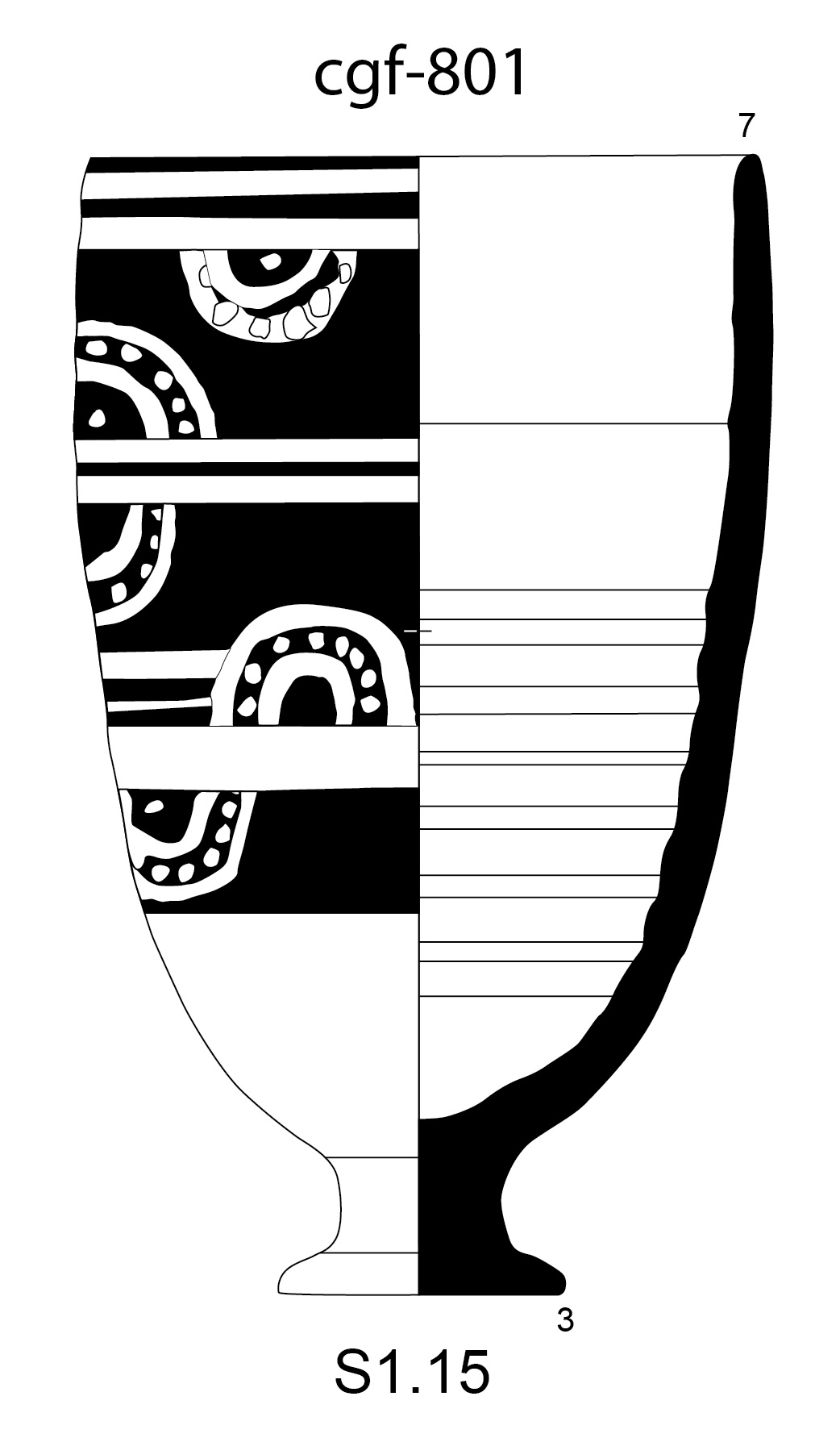
|
Footed goblet
S1.15 |
See more examples in the Cross-horizon typology.
Back to top: Family
h - hole mouth
Hole mouth jars do not have a pronounced neck, and the wall curves inwards at the opening. Hole mouth jars occur throughout the occupation at Urkesh, and are fairly common. The shape only occurs with jars.
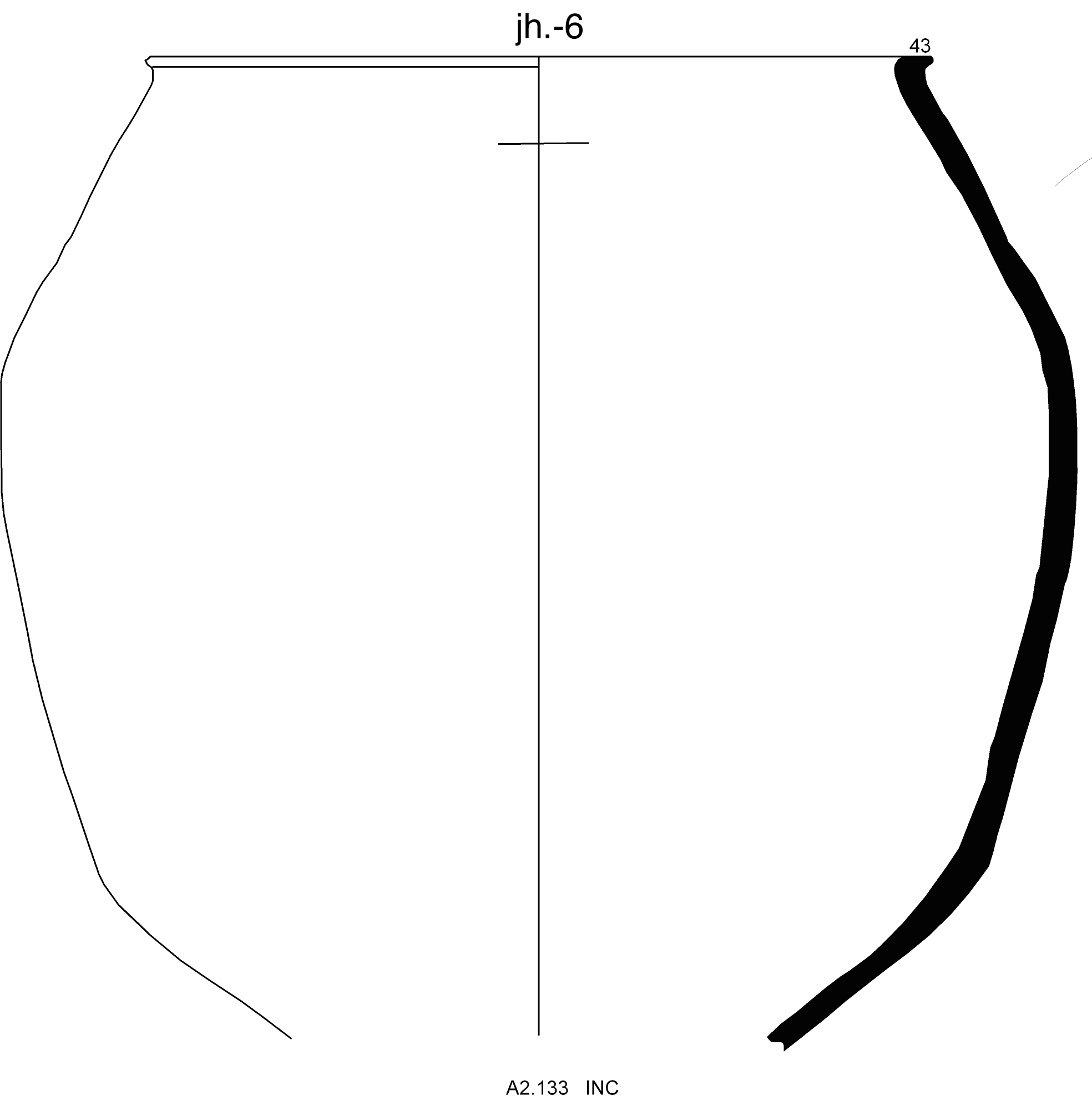
|
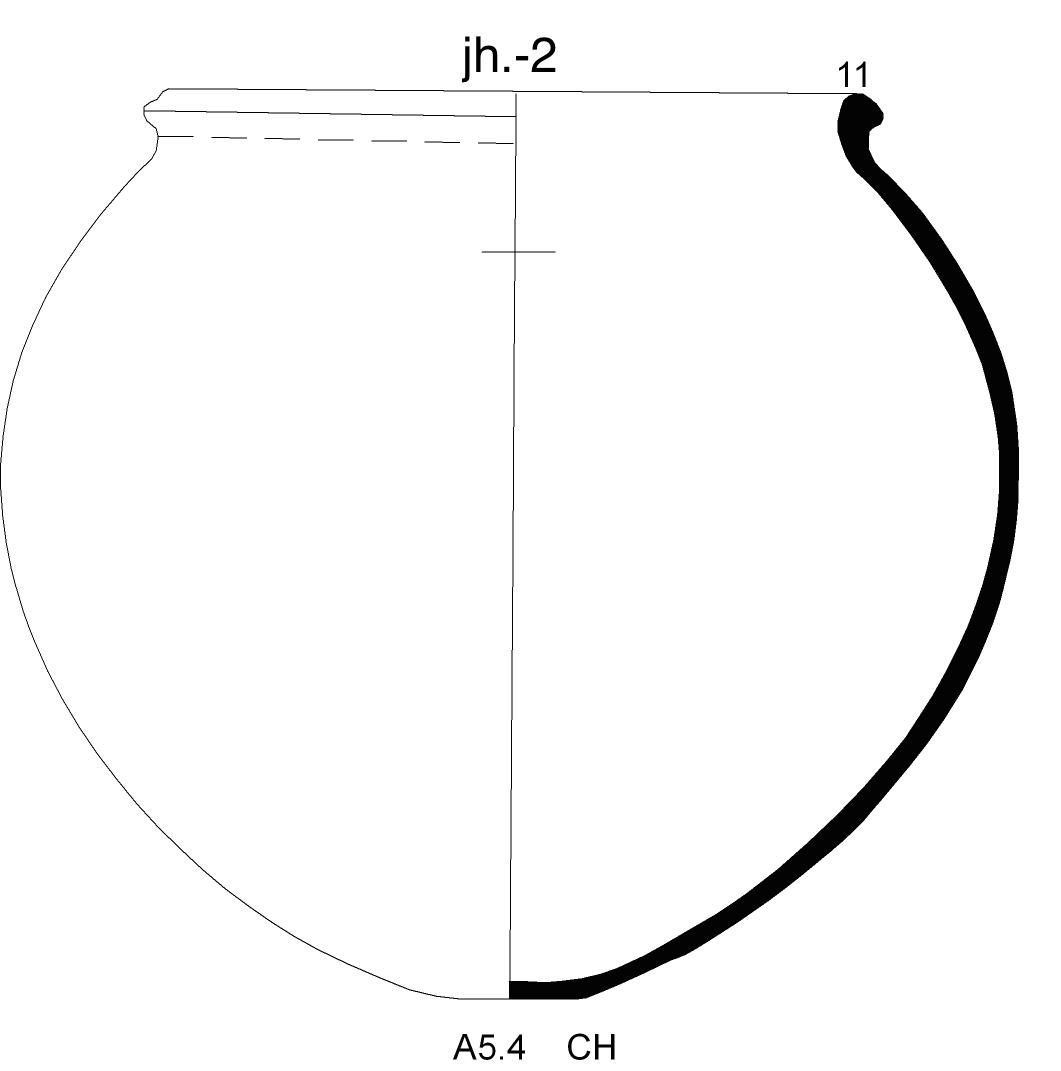
|
Hole mouth jar
A2.133 |
Hole mouth jar
A5.4
|
See more examples in the Cross-horizon typology.
Back to top: Family
he - hemispherical
Both bowls and cups can be hemispherical, and are mostly (but not exclusively) found in the early periods of the site. They often have a round or slightly pointed base. The shape is not one of the most common ones.
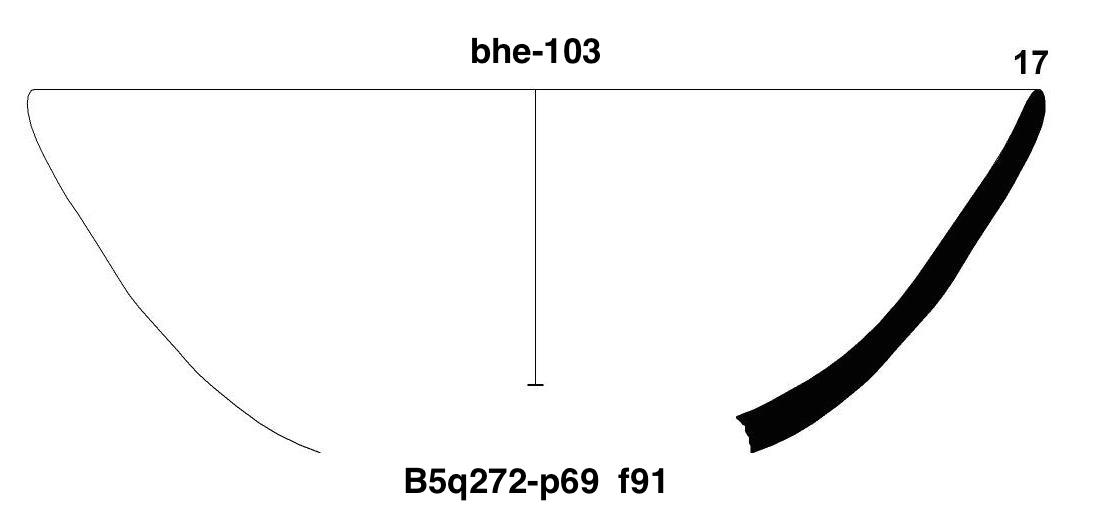
|
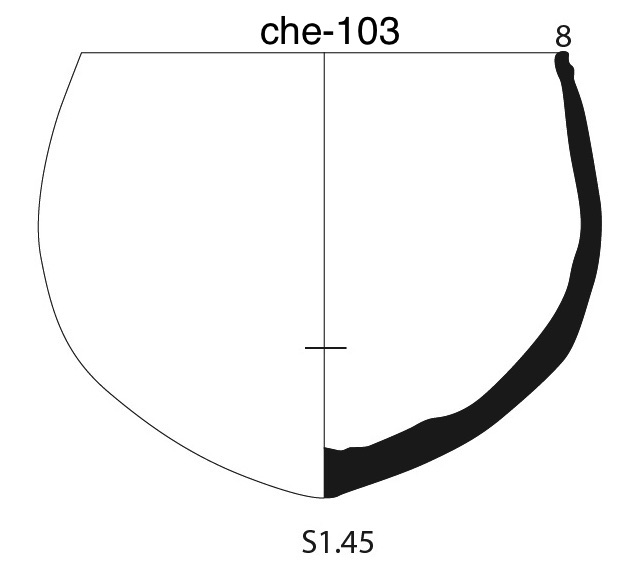
|
Hemispherical bowl
B5q272-p69 |
Hemispherical cup
S1.45
|
See more examples of bowls in the Cross-horizon typology.
See more examples of cups in the Cross-horizon typology.
Back to top: Family
hr - hammer rim
Hammer rim bowls are particular to the Late Chalcolithic period, where they are fairly common. Their characteristic rim has the shape of a hammer when seen in profile.
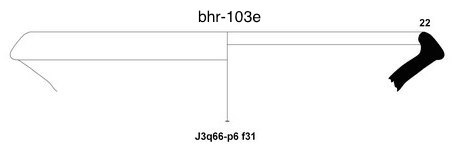
|
Hammer rim bowl
J3q66-p6 |
See more examples in the Cross-horizon typology.
Back to top: Family
m - small/miniature
Both bowls and jars appear in small or miniature versions. Miniature refers to vessels that are so small they lose their functionality. Small vessels retain their functionality but are smaller than the typical size for bowls or jars.
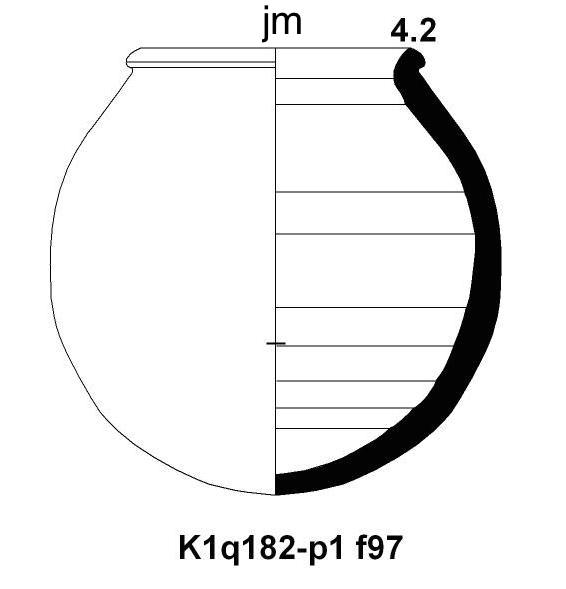
|
Miniature jar
K1q182-p1 |
See more examples of bowls in the Cross-horizon typology.
See more examples of jars in the Cross-horizon typology.
Back to top: Family
n - necked
Necked refers to jars that have a necked area that is narrower than the rim. This shape is a feature of jars only, and is very common. The neck of a jar makes it functionally easier to maneuver and it can, in some cases, then be picked up with one hand around the neck, allowing the contents to be more easily poured. Necked jars are most common in the Khabur and Mittani periods. Necked jars are further divided into flaring, straight, short and restricted - see more about these on the sub-family page.
See examples in the Cross-horizon typology.
Back to top: Family
o - other
The ‘other’ code can be found with bowls, jars and cups, and is used with uncommon shapes that can be distinguished by a type number but do not have any specific attributed family characteristics.
Back to top: Family
r - round sided
Round sided bowls are fairly common in all periods at the site. The round sided code occurs with bowls and cups. The cups usually belong to ED II.
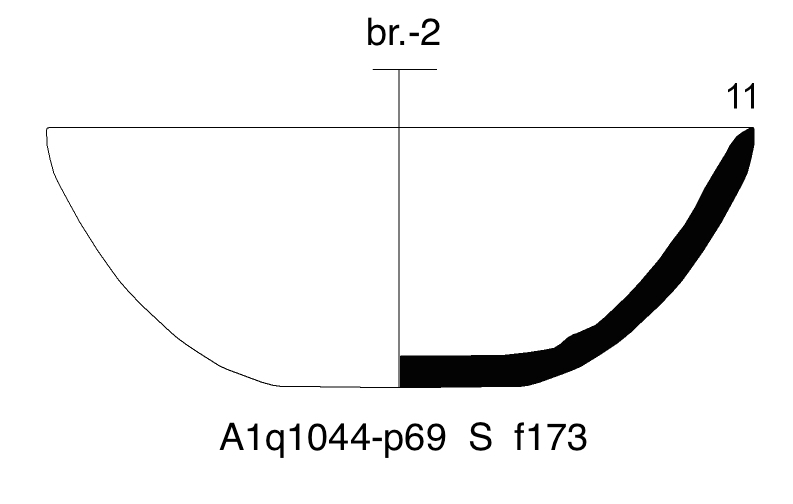
|
Round sided bowl
A1q1044-p69 |
See more examples of bowls in the Cross-horizon typology.
See more examples of cups in the Cross-horizon typology.
Back to top: Family
s - straight sided
Both jars and bowls can be straight sided, although bowls are more common, especially in the early periods.
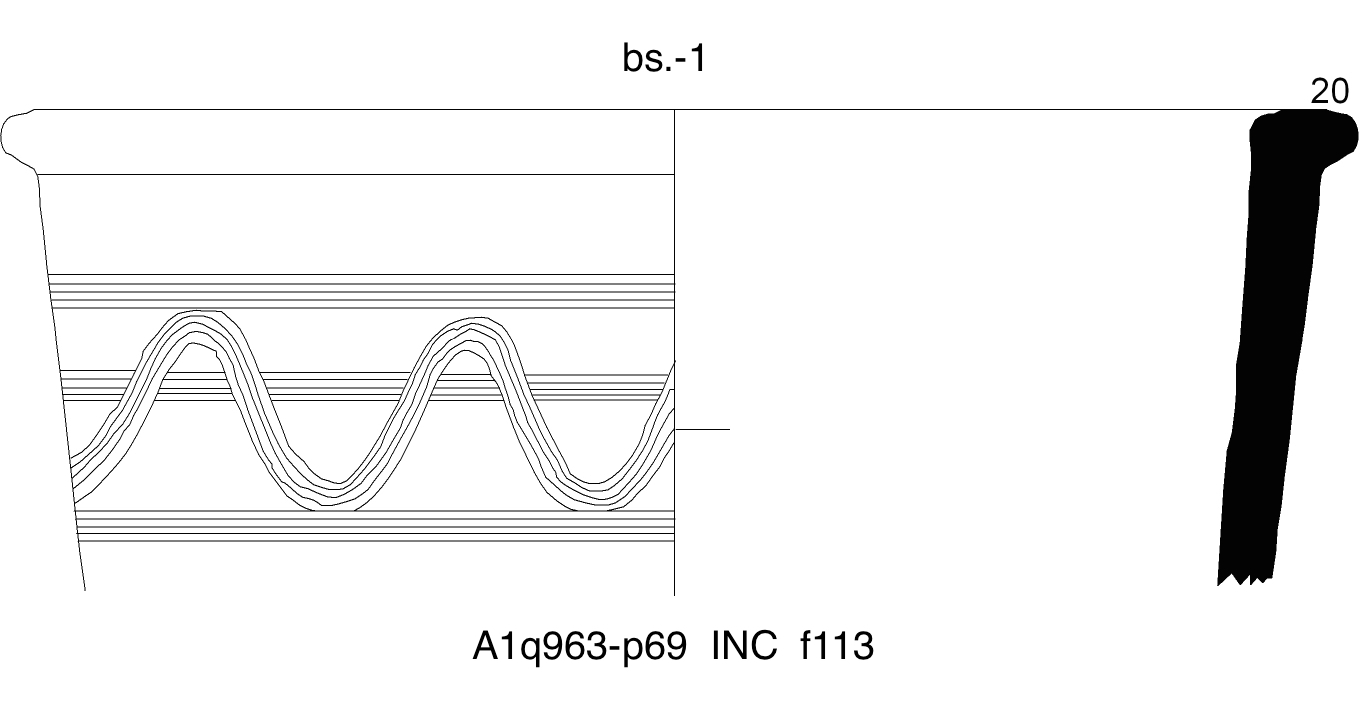
|
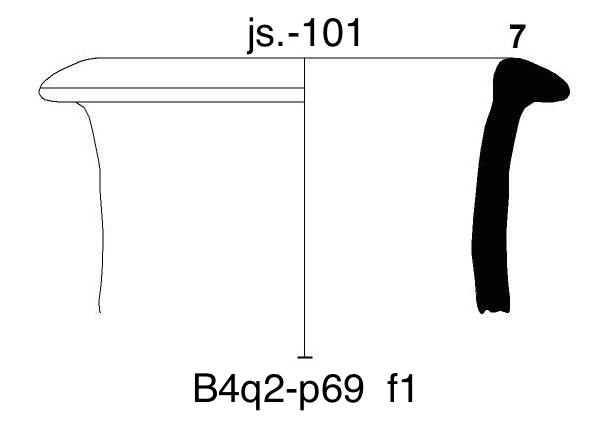
|
Straight sided bowl
A1q963-p69 |
Straight sided jar
B4q2-p69
|
See more examples of bowls in the Cross-horizon typology.
See more examples of jars in the Cross-horizon typology.
Back to top: Family
sh - shouldered
Shouldered jars are fairly common in most periods. The shouldered code only occurs with jars; it sometimes stands on its own, indicating a body sherd of a shouldered jar.
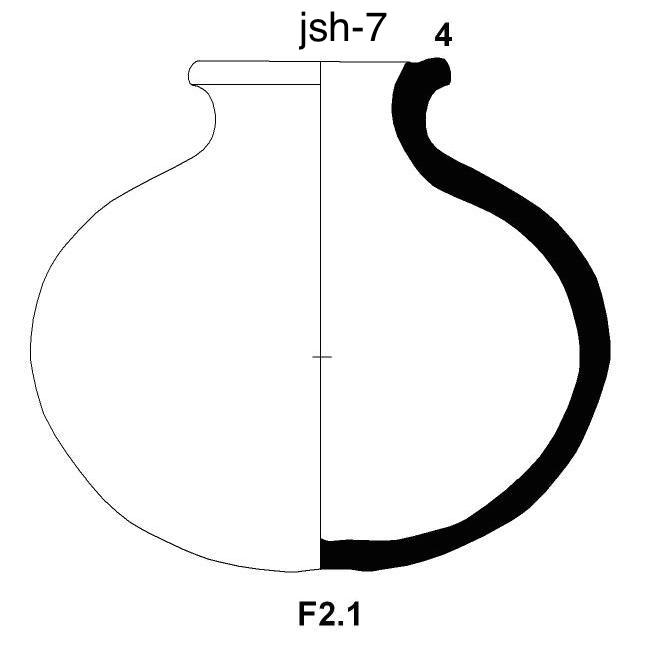
|
Shouldered jar
F2.1 |
See more examples in the Cross-horizon typology.
Back to top: Family
w - wide rim diameter
The wide rim diameter only occurs with bowls, and these mostly belong to the early periods, although it is not a very common shape.

|
Bowl with wide rim diameter
A14q477-p8 |
See more examples in the Cross-horizon typology.